On the issue of a new typology of cultures of onions and onions (part three)
Last time we stopped at the fact that we tried to prove the validity of the culturological typology of “lukophiles and lukofoby”, that is, divisions of cultures that took place in the past, into peoples who worshiped the onions, and peoples who considered him unworthy weapons. For the first time why the knights did not use the bow, the English historian Timothy Newark drew attention. But he stopped there. We continued to consider his concept in terms of spreading love and hatred of the bow, not only in relation to the knights, but also simply peoples (and civilizations), conditionally dividing them into lukofilov and lukofobov. Today we will see what can give us extrapolation of this dichotomy on history human development.
Referring to the data of archeology and written sources, we can conclusively assert that from the American continent to the outskirts of Eurasia in the Stone Age, the bow was truly a mass weapon. It was used on the Andaman Islands, in Japan, in India, in Africa, the Aztecs and Mayans, the inhabitants of ancient Spain (where they found the most ancient European onions in the swamp!) - in short, it was just well spread very widely. Only some nations did not use it, but not at all because they had some kind of prejudice against it. For example, the Masai in Africa do not use onions, but they use a spear with a wide tip - this is the specificity of their hunting practice. We see the same thing with the aborigines of Australia. They simply did not need a bow.
St. Sebastian, pierced by a multitude of arrows, became a peculiar symbol of his era. The emperor Diocletian ordered to execute him this way, but ... after all, the Romans themselves did not use onions. So the execution was carried out by their mercenaries.
But the ancient Egyptians, Assyrians, Persians, and Indians used onions, and the last bow was almost deified. Enough to read the "Mahabharata" to see this. Onions are found in the ancient legends of the narts who lived in the Caucasus, but one could not even remember about the peoples of Siberia and Central Asia. But ... it was here in the dark of the centuries that something happened that caused one of the peoples who lived in this particular area, to have a kind of “dislike” for the bow. Or, let's say, the opinion that this weapon is unworthy of a real man and a warrior! What kind of people was it, and when did this division happen? Well, first of all, neither Cimmerians, nor Scythians, nor Sarmatians can be counted as lukofob. But the Dorians, who came to Greece from the north, what about them? Before them, the Greeks readily used bows. But ... after the Dorian conquest of Greece, everything changed, as proved by the plays of Euripides, and the ancient Greek ceramics. On them you will see the hoplites and horsemen with spears and shields, but the archers are all barbarian mercenaries. Scythians - as evidenced by the inscriptions, that is, people of the second grade. Not citizens! However, perhaps it all started a little earlier or later?
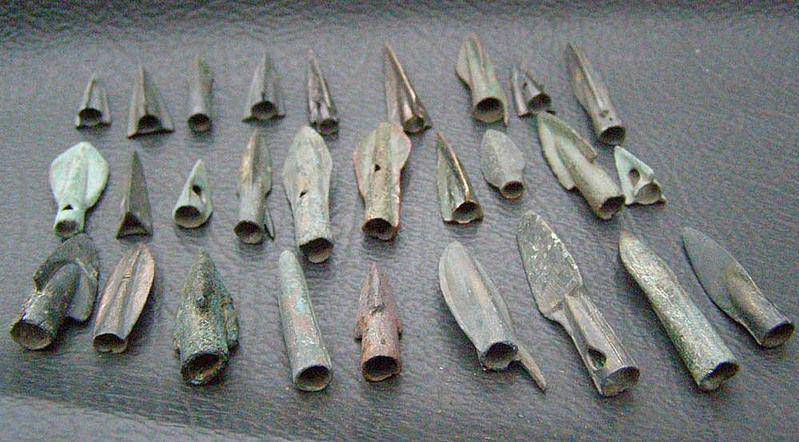
Scythian arrowheads were bronze, vtulchatymi and had a side spike for non-recoverability.
Here, probably, you should refer to the Atlas of World History, edited by Jeff Barraklou, a professor at the University of Oxford, and the Times Books in 2001. It gives a chronology of various events that took place in different regions of the planet at the same time . With it, it is convenient to carry out comparisons. It reads: 2200 - 2000's. (Indo-Europeans) the future ancient Greeks conquer mainland Greece. Meanwhile, the Minoan civilization is developing in Crete. Then it dies as a result of the eruption of the Santorini volcano, and Crete after 1500, the Achaeans seize. Then there is the separation of the Slavs from other Indo-European peoples. And here at the end of the XII century. BC. the Dorian Greeks come, trash the Mycenaean civilization and seize Crete.
And now let us remember the 490 year and the battle of Marathon, where the Greek hoplites defeated the Persian archers. It took about 700 years, and all this time the Greeks (these are completely different Greeks, descendants of newcomers from the north, and where did they come from?) Didn’t treat the bow too well, did they? And they had their own cavalry, but they never shot from the saddle!
We will see that the Huns are ready to win, and they move to the mouth of the Don, and from there a part is ready to go west, and a part to the east and defeats the Romans in the Battle of Adrianople in 378. . Oe., and they do not shoot bows from a horse, which is noted by all Roman historians. T. Newark also writes about this when he says that the Gothic tactics of war preceded knightly, that is, it was a fight with a sword and a spear. Well, the Chinese are unimportant riders, around 300, they invent a high saddle with stirrups. That is, what happens: somewhere in the wilds of Central Asia, where the Goths once lived, for some reason this strange idea arose that the bow is not a man’s weapon, and only the warrior who fights the enemy with a sword and a spear. At the same time, the Goths, naturally, lose to the Huns (that is, they lived not far from them) and leave the latter to the west. Lucophiles remain in the east, including China and Japan, while goto go-gots go to the west, who later created the basis for European Gothic culture with their conquests. But the Romans did not love the onions, but adopted this dislike from the Greeks. That is, this lukofobiya arose long before the ready, and there was a people (what kind of people?), Which transferred it to the Greeks. But u ready, let's say, she reached the maximum. That is, we have a long historical process that engulfed both parts of Asia and Europe, and gradually led to the serious social changes that T. Newark already wrote about in 1995 year.
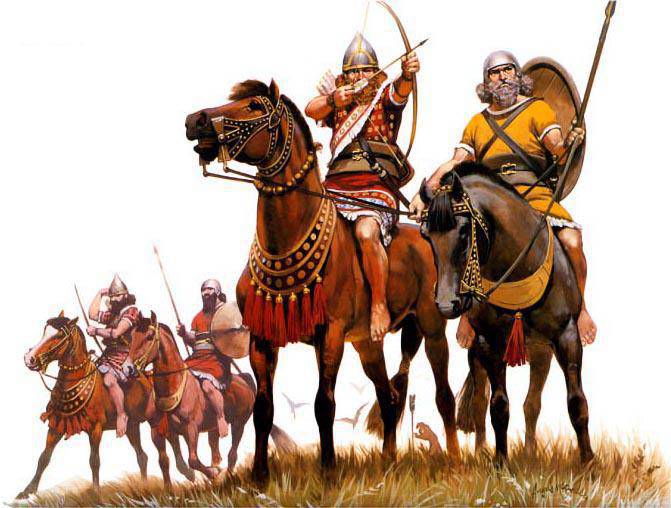
The Assyrians very early began to use horse archers who shot from a horse. But first the reins were held by another rider! Fig. Angus McBride
When and where exactly happened, and what happened such that turned away and ready, and those who lived in this region before them, from the bow, we, most likely, will never know. Although this could write an excellent historical novel. But you can try to trace the migration path of ancient lukofobov through the funeral inventory. If the burial is male, there is a sword, a spear, a shield in it, but there are no arrowheads, then the conclusion is obvious - “lukofob” is buried here.
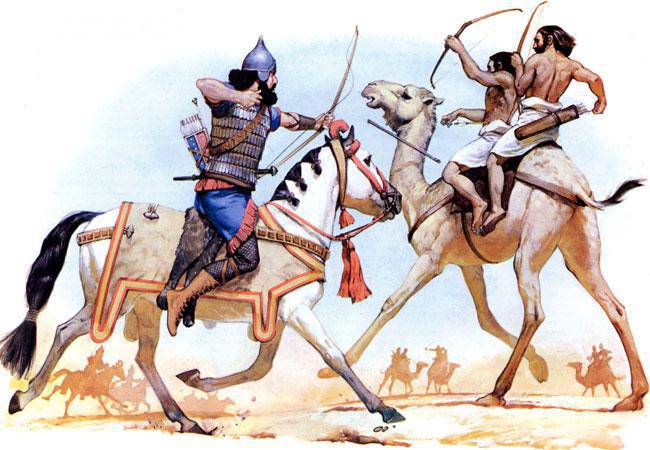
Assyrian horse archer against Arab riflemen on camels. Over time, the Assyrians mastered the art of riding so that their riders began to act like Scythians. Fig. Angus McBride
Well, now let's think about the fact that any, in general, culturological typology is dichotomous. For example, Apollonic and Dionysian, Atlantic and Continental, forests and steppes, and so on. But a good theory should also explain a lot, and in this case, yes, indeed, it is the typology of lukofilov and lukofobov that allows you to answer one very important question: why does the West not like Christian Russia, where does it come from? Everything is clear with the East: religion, violation of the chivalrous tradition of not shooting from a horse - this is the reason to “get angry” for centuries. But our ancestors were Christians ...
Bayesian embroidery. Norman knights, ahead of which are archers, attacked the infantry of Harold. It was the archers who played the main role in this battle, but ... traditionally it is believed that it was the cavalry!
To begin with, we note that the Gothic military culture had no effect on the Slavs. So they Black Sea Steppe corridor to the west and left. This was followed by centuries when barbaric kingdoms were created in Europe, and in our country our ancestors reflected Avars and Pechenegs, Polovtsy and Mongol-Tatars. And in this struggle with the East, they took from him all the best. Maybe they did not know how to shoot from a horse with such skill as these peoples. But they did not shy away from this art - that is what is important! And even having become Christians, our distant ancestors-warriors of princes had a bow and arrows in their arsenal! And having met with “brothers by faith” on the battlefields, they appeared in the eyes of the latter not only apostates, but also - perhaps it was even worse - people professing a “barbaric principle” not covered by any external piety - “the end justifies the means "" It is profitable for me to shoot a bow from a horse, which means I shoot! "
Remarkably draws English artist Graham Turner. But ... what do we see in his drawings? Knights whose horse armor covers the neck and cereals of their horses. What for? Who will beat in the battle with a sword on the rump? But everything becomes clear if we refer to the manuscripts of those years. The arrows of the archers are the reason for such a strange "booking." They rained down from above like rain and, ... gaining a very high speed, put deadly wounds to the horses, and the light-wounded horses simply lay down and could not run any farther!
Recall our epics. There, the use of the bow and arrows by the warriors is not condemned at all, but the epic words are “the voice of the people”. That is, our ancestors did not see that the knight shoots a bow, sitting astride, nothing shameful; both bows and arrows entered our horsemen’s panoply for a long time! What many foreigners who visited Muscovy wrote about. They say that they ride hollowed stallions, drive them with whips and skillfully shoot a bow both forward and backward. Moreover, it took the description of the local cavalry of the seventeenth century, they wrote about it ... Well, how could it be transferred and put up with it? And even when the original reason for this “dislike” was already forgotten, the memory of her and the fact that “you can expect everything from these Russians” was preserved and passed on to the descendants of “knights-ready”.
However, he has something to draw. In the Metropolitan Museum in New York alone, several complete knightly armor, including horseback, is displayed.
Well, and we ourselves have contributed a lot to this - well, so that they think about us that way, so that the “dislike” of the West can also be explained by this very long cultural tradition. And, by the way, our domestic historians still well understood and wrote, in particular, Klyuchevsky, in pre-revolutionary times, that we represent a unique culture and surpass the West with light weapons, and the East, respectively, is heavy, but not so much that it interferes with us. to fight with those and with others not only on an equal footing, but also to excel both.
Pay attention to how the knight’s horse is protected from the front. The mask, bib and plates protect the head, neck and chest. But his neck is also protected from above.
“Nakrupnik” had the shape of a bell to protect the horse's legs and divert the arrows to the sides.
Hence the spread in Russia of knight’s sword and oriental sabers, bows and arrows, and ... crossbows, light oriental mail and heavy lamellar armor, which sometimes were as good as knight’s armor. Well, who will like this exclusivity, when people most of all love you to be like everyone else, and exclusivity and exclusivity are usually not forgiven to anyone! And, as you can see, it is the typology of “lukofily-lukofoby,” moreover, precisely with reference to our history, that allows us to give a truly comprehensive answer to many questions of our history!
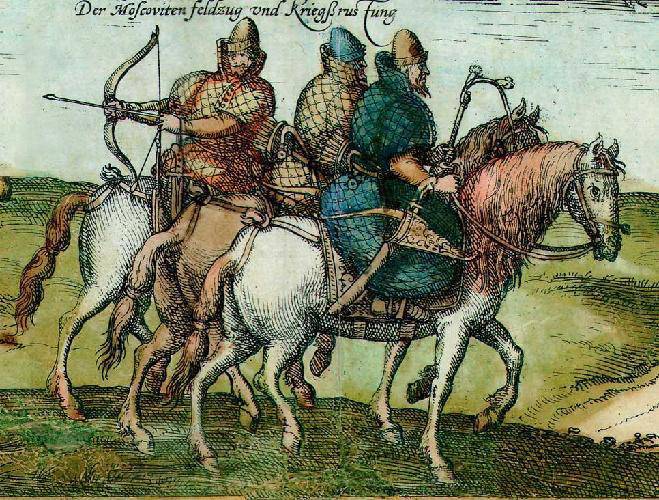
Here it is, our pre-Petrine local cavalry, who knew how to shoot backwards at a gallop just as well as the Scythians!
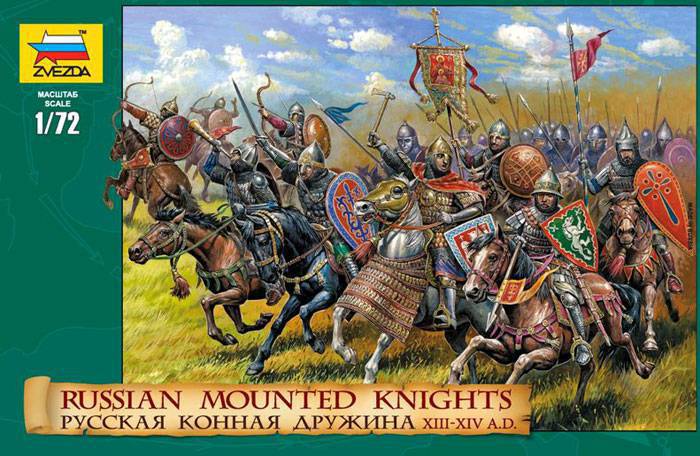
And these are the figures of the Zvezda company. What are not knights? And with bows in hand!
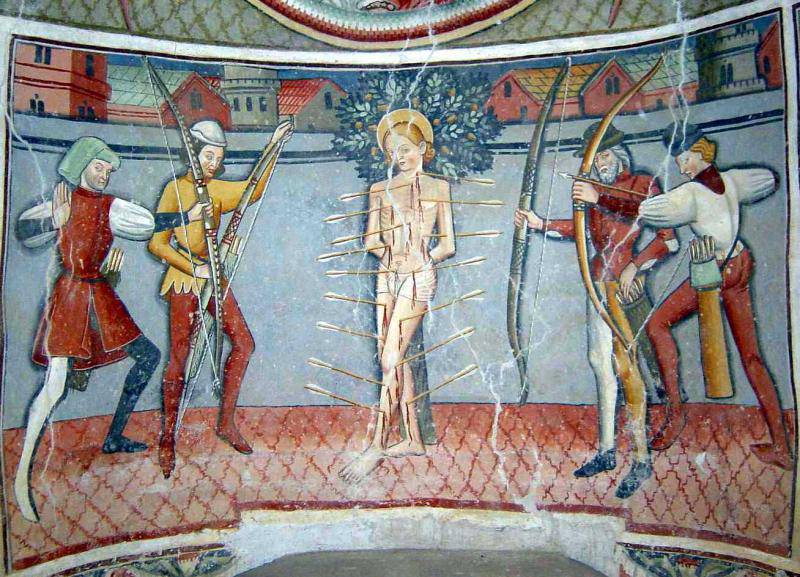

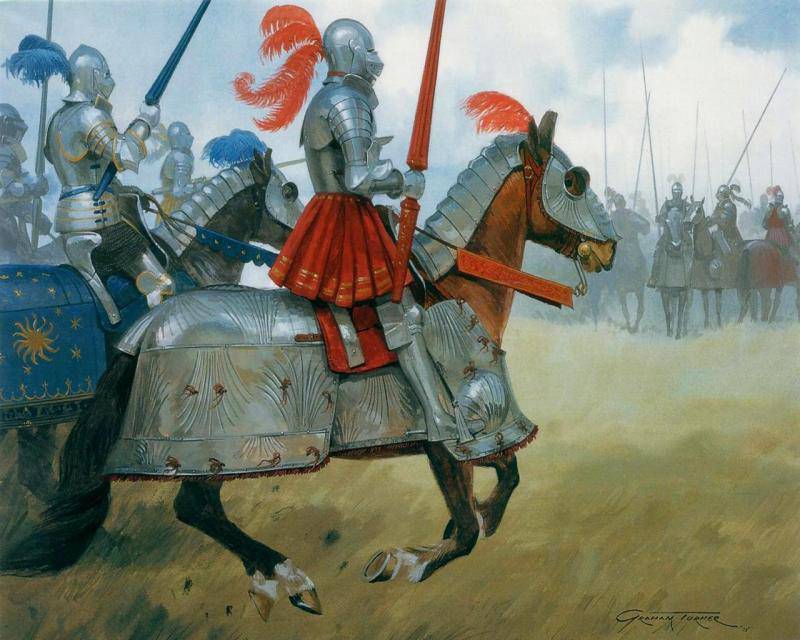
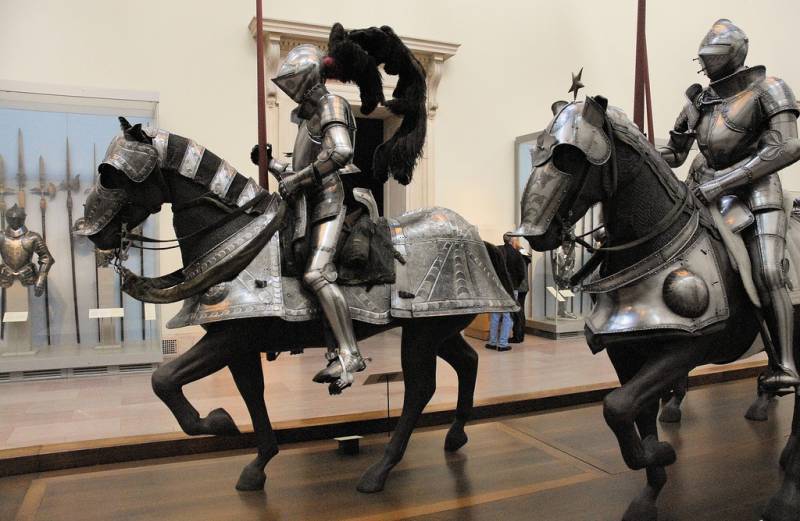
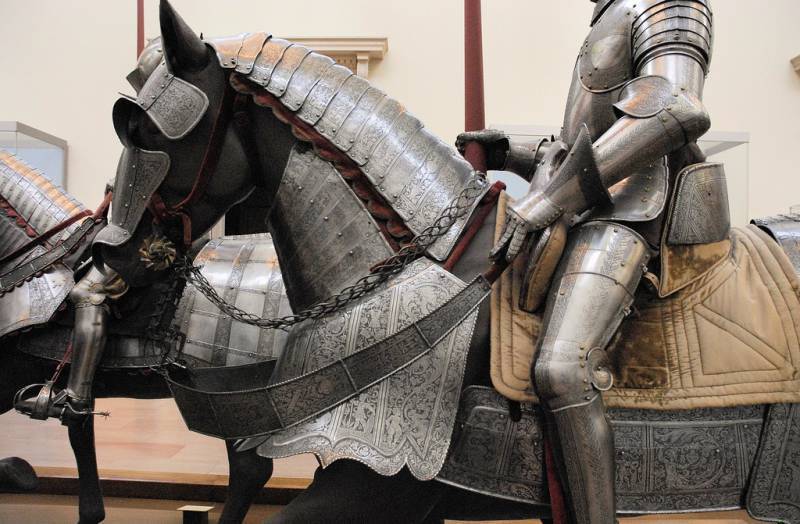
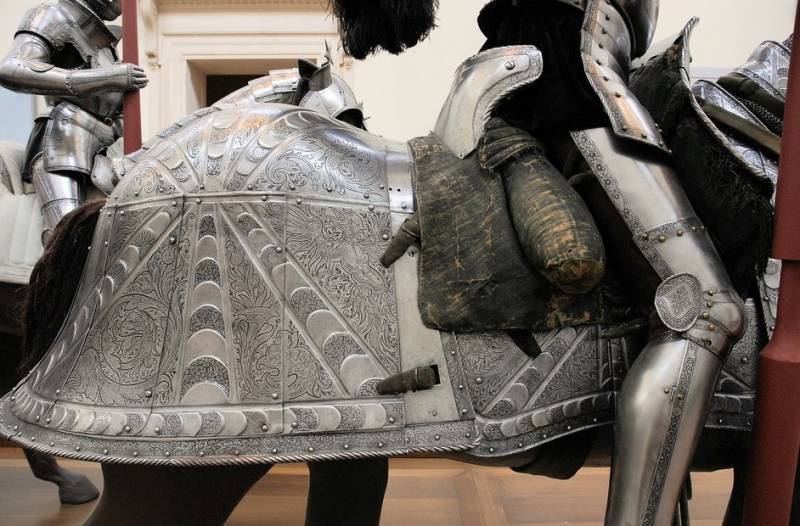
Information